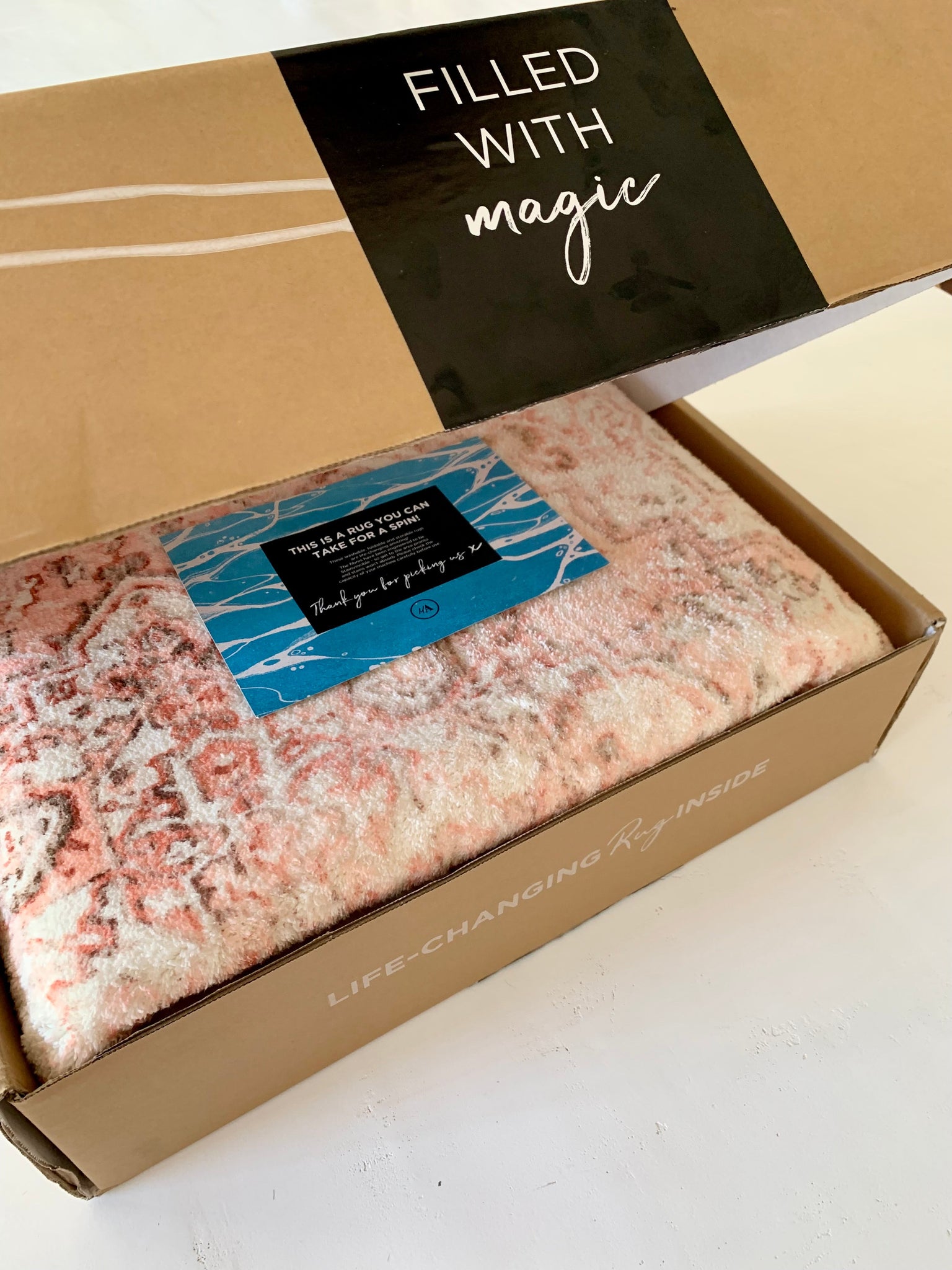
How To Stop A Rug From Shedding: 4 Expert Tips
Shedding occurs as a result of loose fibres on the surface of the rug and can be reduced by choosing low-shedding materials, avoiding high-traffic areas, and properly vacuuming your rug. Regular maintenance, including rotating your rug, using the right rug pad, and maintaining optimal humidity levels, can also help prolong the life of your rug.
By selecting a low-shedding rug and practicing regular maintenance, you can save money and maintain the beauty of your decorative investment for generations to come.
What Is Rug Shedding?
Definition of Rug Shedding
Rug shedding is the process where fibres come loose from the surface of the rug and accumulate on the floor around it. The degree of shedding depends on the quality of the rug and the frequency of use. New rugs, for example, will shed more than old ones because the fibres have not yet seated themselves in the weft and warp of the rug.
Common Materials That Shed the Most
Most rugs will shed some fibres over their lifespan, but certain materials are more prone to shedding than others. Wool rugs are known to shed more than other materials, but this should taper off after a short period of use. Cheap synthetic rugs also shed frequently as the fibres are not tightly woven together. With maintenance, you can reduce the amount of shedding significantly.
Overview of Shedding Causes
Shedding happens as a result of the rug’s pile, which is made up of thousands of fibres woven onto the rug’s surface. When the fibres are not tightly woven, they will loosen and come off, leading to shedding. Other things that can cause shedding include excessive foot traffic, pet hair, and vacuuming the rug’s fibres loosely. Shedding cannot be entirely prevented, but reducing the frequency of the above activities will help prolong the rug’s lifespan.
💡KEY TAKEAWAY: Rug shedding is a common occurrence, but understanding why it happens will help you take the necessary steps to reduce it. Rebekah’s passion for the art of rug-making is evident in her writing, making her blog a valuable resource for anyone looking to learn about rugs.
Our blog has all the information you need if you’re always searching for the best rugs Melbourne has to offer.
Best Tips to Reduce Rug Shedding
Tip 1: Choose Low-Shedding Materials
When selecting a rug, opt for materials that are known for their low-shedding properties, such as silk or wool blends. These materials shed less and, with proper care, will maintain their appearance for years to come. Avoid synthetic materials or wool rugs with a high pile, as they tend to shed more frequently.
Tip 2: Avoid High-Traffic Areas
Placing your rug in high-traffic areas like hallways or entryways can increase shedding as the constant foot traffic will cause friction between the fibres. Instead, place the rug in an area with lower foot traffic, such as a bedroom or a seating area. Not only will this help reduce shedding, but it will also extend the life of your rug.
Tip 3: Proper Vacuuming Techniques
Vacuuming your rug is crucial to maintaining its appearance and reducing shedding. However, it is important to use the right technique. Use a vacuum cleaner with a low-pile setting to avoid damaging the fibres, and vacuum in the direction of the pile, not against it. This will help you remove any dirt and debris from your rug while minimising shedding.
💡KEY TAKEAWAY: When it comes to rug shedding, prevention is key. Choose low-shedding materials, place your rug in low-traffic areas, and use proper vacuuming techniques to maintain the rug’s appearance and minimise shedding. Remember that regular upkeep is critical to the lifespan of any rug, and these tips will help ensure your rug stays looking its best for years to come.
Other Ways to Prevent Rug Shedding
Rotate Your Rug Regularly
Make sure you rotate your rug every few months or so. This will prevent high-traffic areas from wearing down more quickly than other parts of the rug, which can lead to shedding. Rotating the rug will distribute the wear and tear more evenly, lengthening its lifespan.
Use the Right Rug Pad
Using the right rug pad can also prevent shedding. Opt for high-quality, non-slip rug pads that are the correct size for your rug. The pad should be able to support the weight of the rug without slipping or crushing, which can cause the rug fibres to loosen and shed.
Maintain Optimal Humidity Levels
Excess moisture or dryness can cause rugs to shed. To prevent this, maintain optimal humidity levels in your home. This is especially important if you live in an area with extreme temperature changes throughout the year. Use a humidifier in the winter months and a dehumidifier in the summer months to keep humidity levels consistent.
By rotating your rug, using the right rug pad, and maintaining optimal humidity levels, you can prevent rug shedding and increase the longevity of your decorative investment.
💡KEY TAKEAWAY: Rotating your rug, using the right rug pad, and maintaining optimal humidity levels are additional ways to prevent rug shedding and extend the life of your rug. These tips will ensure that your rug maintains its quality and appearance over time.
How to Choose Rugs That Don’t Shed
Synthetic or Natural Fibres?
One of the first things to consider when choosing a rug that won’t shed is the fibre. Synthetic fibres such as nylon, polyester, and olefin are less likely to shed than natural fibres such as wool or silk. However, if you prefer natural fibres, look for wool or silk rugs that have been pre-washed and softened to minimise shedding.
Focusing on Tufted vs. Woven Rugs
Another factor to consider is the type of rug. Tufted rugs tend to shed more than woven rugs because their fibres are less tightly woven together. If shedding is a concern, opt for a woven rug like a flatweave or a kilim that has a tighter weave and less pile.
Benefits of Low-Pile Rugs
Low-pile rugs are a great option if you want to minimise shedding. These rugs have a shorter pile height, which means fewer fibres can come loose and shed. Additionally, low-pile rugs are easier to clean and maintain, making them a practical choice for high-traffic areas.
💡KEY TAKEAWAY: When choosing rugs that don’t shed, consider the fibre, type, and pile height. Synthetic fibres, woven rugs, and low-pile rugs are all great options to minimise shedding in your home.
Wrapping Up
Simple Recap of Shedding Prevention Methods
To summarise, preventing rug shedding largely depends on choosing low-shedding rugs, regular vacuuming, and proper maintenance. Make sure to avoid high-pile and shaggy rugs, opt for wool or silk material, and invest in a rug pad. Remember to vacuum your rug regularly using a low suction setting, spot clean spills immediately, and deep clean your rug every 12 to 18 months.
Cost-Saving Benefits of Good Rug Maintenance
While regular maintenance can seem like a chore, it can also save you money in the long run. Investing in high-quality low-shedding rugs and taking care of them properly can extend their lifespan, preventing the need for frequent replacement. Additionally, regular cleaning and maintenance can prevent long-term damage and reduce the need for costly repairs in the future.
Closing Remarks on Choosing Low-Shedding Rugs
Choosing a low-shedding rug is essential for maintaining its beauty and prolonging its lifespan. This guide has hopefully provided you with useful tips for preventing rug shedding and maintaining your rugs. Remember, choosing the right rug is only the first step, proper maintenance is crucial. With regular care, your rugs can remain beautiful and last for generations to come.
💡KEY TAKEAWAY: Choosing a low-shedding rug and practising regular maintenance can save you money in the long run while maintaining the beauty of your rug.

















